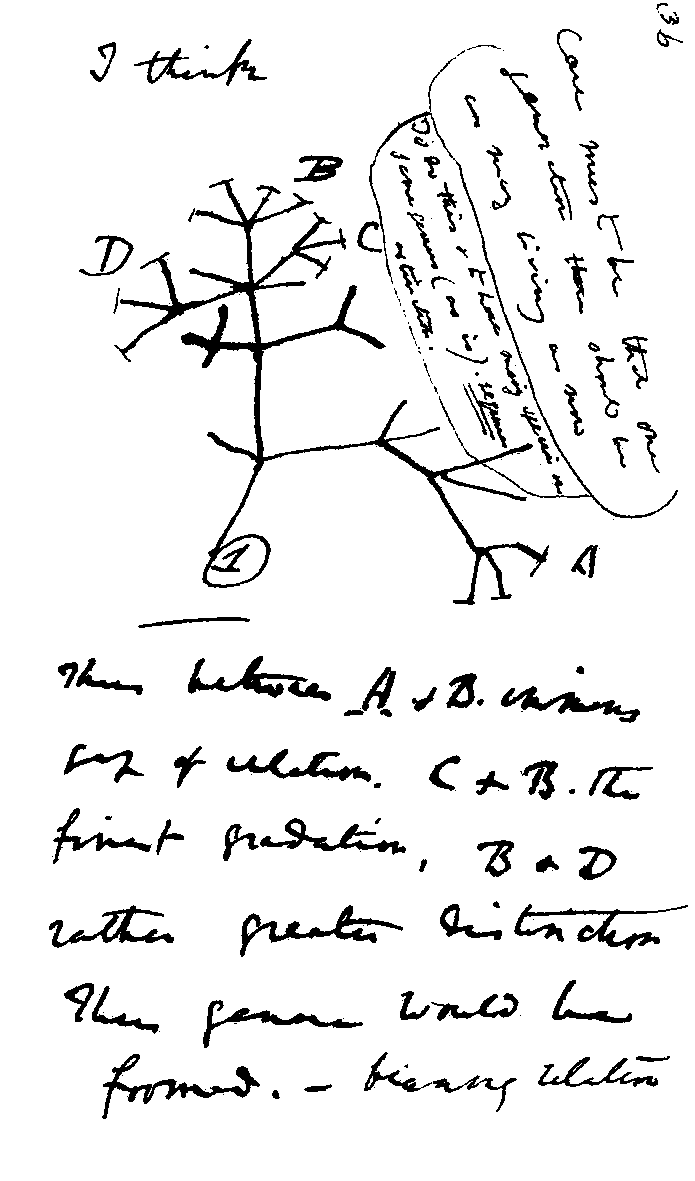Darwin tree
Interpretation of handwriting: "I think case must be that one generation should have as many living as now. To do this and to have as many species in same genus (as is) requires extinction . Thus between A + B the immense gap of relation. C + B the finest gradation. B+D rather greater distinction. Thus genera would be formed. Bearing relation" (next page begins) "to ancient types with several extinct forms". Text in Darwin's format:
36 (text) I think (tree graph) B D C 1 A (text on the side) Case must be that one generation then should be as many living as now. To do this & to have many species in same genus (as is) requires extinction. (text below tree graph) Thus between A & B immense gap of relation. C & B the finest gradation, B & D rather greater distinction. Thus genera would be formed. — bearing relation(The text continues outside the image:)(page 37) to ancient types. — with several extinct forms for if each species an ancient (1) is capable of making 13 recent forms, twelve of the contemporarys must have left no offspring at all, so as to keep number of species constant. — With respect to extinction we can easy see that variety of ostrich, Petise may not be well adapted, and thus perish out, or on other hand like Orpheus being favourable (page 38) many might be produced. — This requires principle that the permanent varieties produced by inter confined breeding & changing circumstances are continued & produced according to the adaptation of such circumstances, & therefore that death of species is a consequence (contrary to what would appear from America). Source of this text: User fileunderwater at https://biology.stackexchange.com/questions/46481/darwins-first-sketch-of-a-phylogenetic-tree , consulted on 26 April 2021.
|
Ten materiał przeszedł do domeny publicznej w kraju pochodzenia, jak również w państwach i terytoriach, gdzie prawo autorskie wygasa w ciągu 70 lat po śmierci autora. Powyższa praca jest własnością publiczną w Stanach Zjednoczonych, ponieważ została opublikowana (lub zarejestrowana w U.S. Copyright Office) przed 1 stycznia 1927. | |
| Plik rozpoznano jako wolny od znanych ograniczeń praw autorskich, włącznie z prawami zależnymi i pokrewnymi. | |
Więcej informacji o licencji można znaleźć tutaj. Ostatnia aktualizacja: Mon, 05 Dec 2022 08:26:06 GMT
